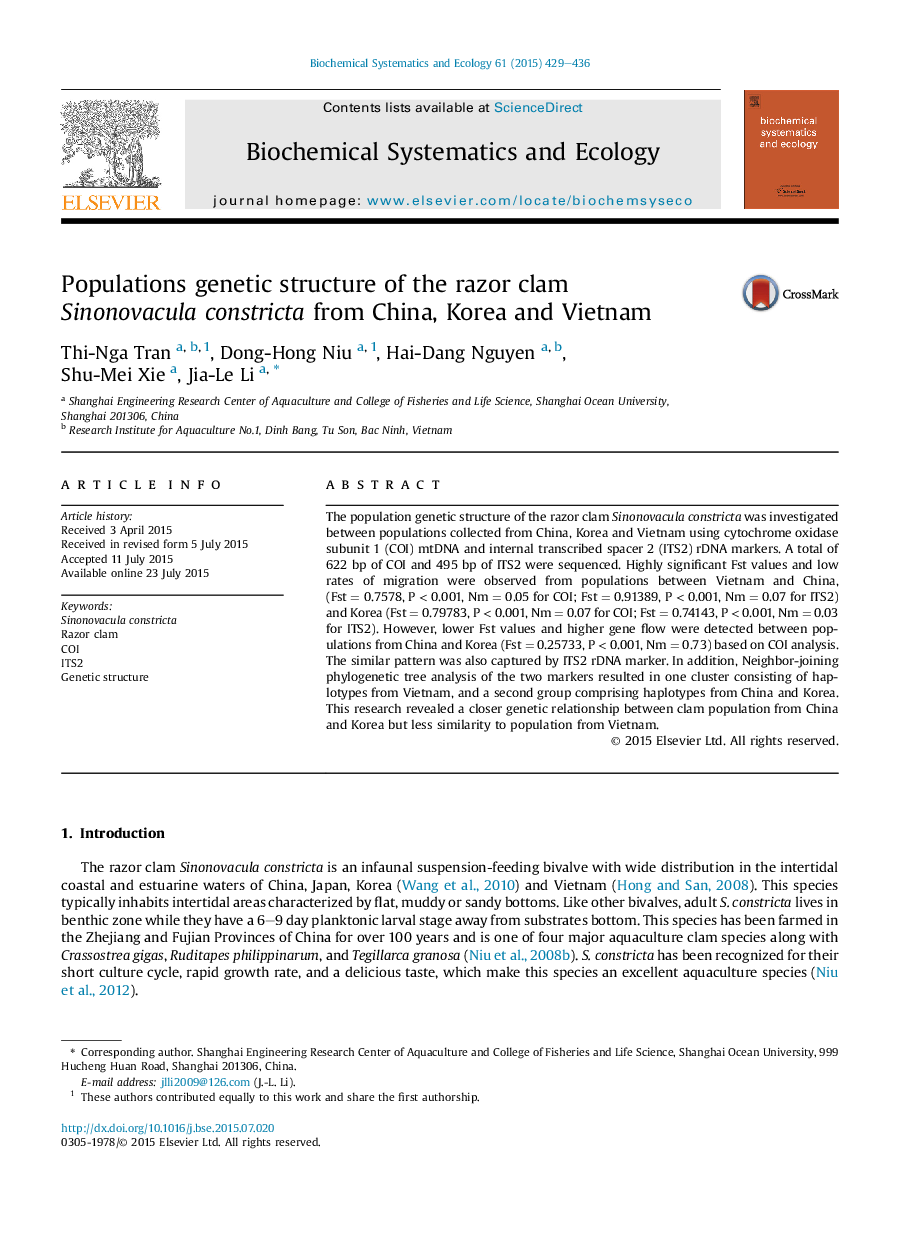| Article ID | Journal | Published Year | Pages | File Type |
|---|---|---|---|---|
| 1354234 | Biochemical Systematics and Ecology | 2015 | 8 Pages |
•Razor clam populations from China, Korea and Vietnam were compared.•COI mtDNA and ITS2 rDNA were used for genetic markers.•Both markers indicated populations from China and Korea are more closely related.•Neighbor-joining phylogenetic tree analysis confirmed the population genetics.
The population genetic structure of the razor clam Sinonovacula constricta was investigated between populations collected from China, Korea and Vietnam using cytochrome oxidase subunit 1 (COI) mtDNA and internal transcribed spacer 2 (ITS2) rDNA markers. A total of 622 bp of COI and 495 bp of ITS2 were sequenced. Highly significant Fst values and low rates of migration were observed from populations between Vietnam and China, (Fst = 0.7578, P < 0.001, Nm = 0.05 for COI; Fst = 0.91389, P < 0.001, Nm = 0.07 for ITS2) and Korea (Fst = 0.79783, P < 0.001, Nm = 0.07 for COI; Fst = 0.74143, P < 0.001, Nm = 0.03 for ITS2). However, lower Fst values and higher gene flow were detected between populations from China and Korea (Fst = 0.25733, P < 0.001, Nm = 0.73) based on COI analysis. The similar pattern was also captured by ITS2 rDNA marker. In addition, Neighbor-joining phylogenetic tree analysis of the two markers resulted in one cluster consisting of haplotypes from Vietnam, and a second group comprising haplotypes from China and Korea. This research revealed a closer genetic relationship between clam population from China and Korea but less similarity to population from Vietnam.
